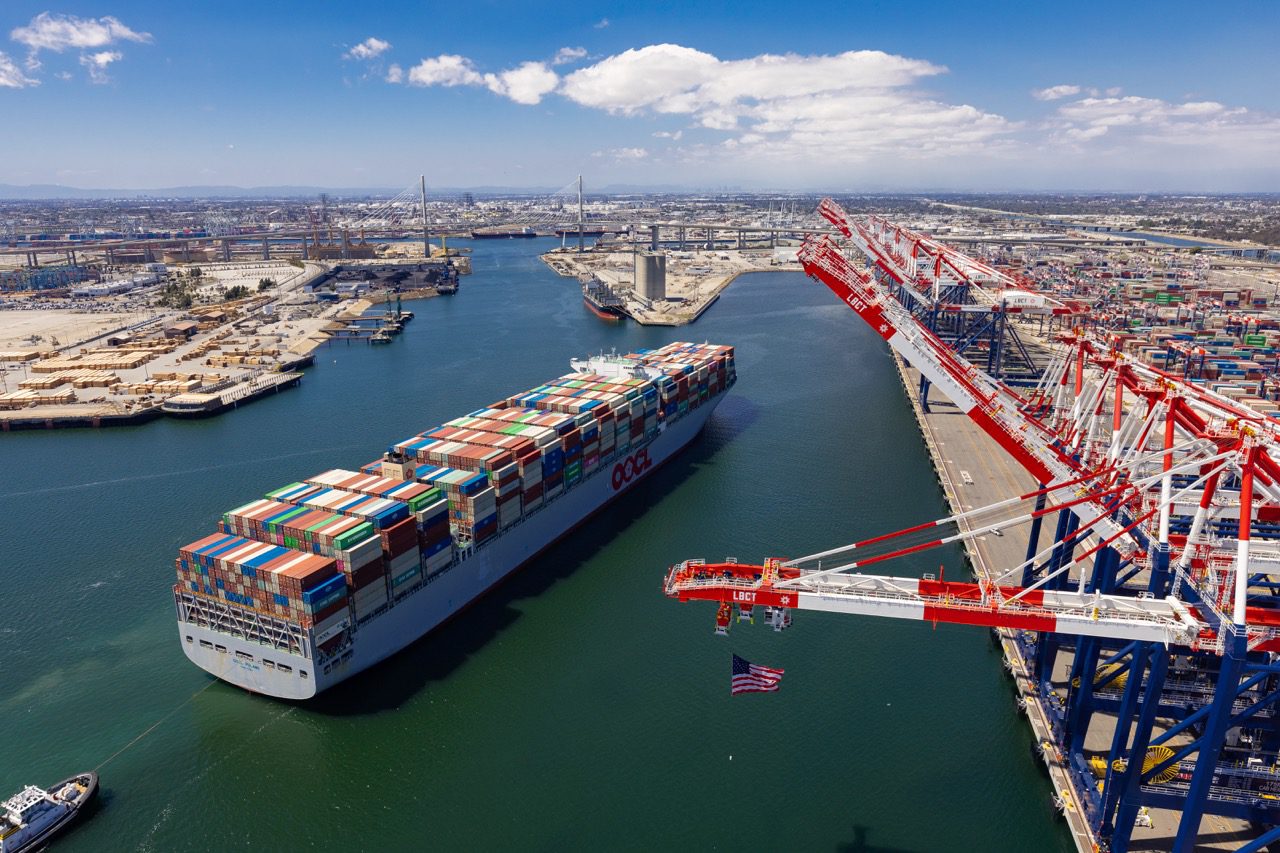Lloyd’s Register has given its stamp of approval (in principle) for a newcastlemax bulk carrier fitted Anemoi Rotor Sails that will help “significantly improve” the efficiency and reduce environmental impact of the design.
Rotor Sails are a modernized versions of the Flettner Rotor, comprised of tall cylinders which, when driven to spin, use the Magnus effect to harness the power of the wind to provide auxiliary propulsion to vessels, reducing overall fuel consumption and lower harmful emissions. The leading company in the space, Norsepower, has already installed its version of the Rotor Sail on a handful of ships, including a newbuild Very Large Ore Carrier chartered to Vale.
The AIP by from Lloyd’s Register covers the structural integration for a ship design with six 5x30m Rotor Sails and Anemoi’s Rail Deployment System, which sees the Rotor Sails move transversely across the deck to avoid inference with cargo handling; and the structural integration for a ship design with four of Anemoi’s folding, or tilting, 5x35m Rotor Sails.
Lloyd’s Register says its has assessed the calculation used to estimate the impact the Rotor Sails will have on the Energy Efficiency Design Index (EEDI) and validated that the newbuild Newcastlemax would have its EEDI score reduced from 1.92 to 1.37, a 29% reduction, by installing six 5x30m Rail Rotor Sails and 1.47 (23% reduction) by installing four 5x35m Folding Rotor Sails.
“We’re very pleased with the outcome for the first vessel included in the JDP. EEDI is a significant driver for the installation of Rotor Sail technology and, as we grow closer to the implementation of EEXI and CII, they too become important incentives for Rotor Sails, along with the overarching reductions in fuel consumption and associated emissions,” said Nick Contopoulos, Anemoi’s CEO. “To have the impact pre-validated by LR is a key step in continuing to prove the importance of our technology in the context of the decarbonisation of shipping. Both design configurations (folding and rail) of Rotor Sails for a Newcastlemax vessel are available to order now.”
The Newcastlemax Approval In Principle (AIP) is part of a joint development project signed in 2020, with Anemoi Marine Technologies, Lloyd’s Register, and the Shanghai Merchant Ship Design and Research Institute, bringing together the equipment manufacturer (OEM), classification society, ship designer, and ship owner to develop a series of energy-efficient vessel designs equipped with Rotor Sails. Oldendorff Carriers is the shipowner partner for this Newcastlemax design.
Newcastlemax refers to the largest-size ship that can enter Australia’s Port of Newcastle, the world’s largest coal port.
Other vessels included in the JDP and to follow are an 85,000 DWT Bulk Carrier, a very large ore carrier (VLOC), a 114,000 DWT Aframax tanker, a 50,000 DWT MR tanker and a very large crude carrier (VLCC).
“This collaboration with Anemoi, LR and Oldendorff demonstrates the great potential of Rotor Sail technology to drive significant reduction in emissions and provide ship owners and charterers with available solutions for regulatory compliance, as we move towards 2030 and beyond. We are very pleased to see the market moving and starting to place commercial orders for this renewable technology,” said Wang Gang Yi, Chief Engineer of SDARI.
Director Innovation, Torsten Barenthin, of Oldendorff Carriers commented: “This has been an important project as part of Oldendorff Carriers’ commitment towards Getting to Zero. The results have demonstrated the impressive impact Rotor Sails have on regulatory obligations, which is a key consideration, in addition to the emission reduction benefits. We will continue our assessment of Anemoi’s technology for our fleet.”

 Join The Club
Join The Club










